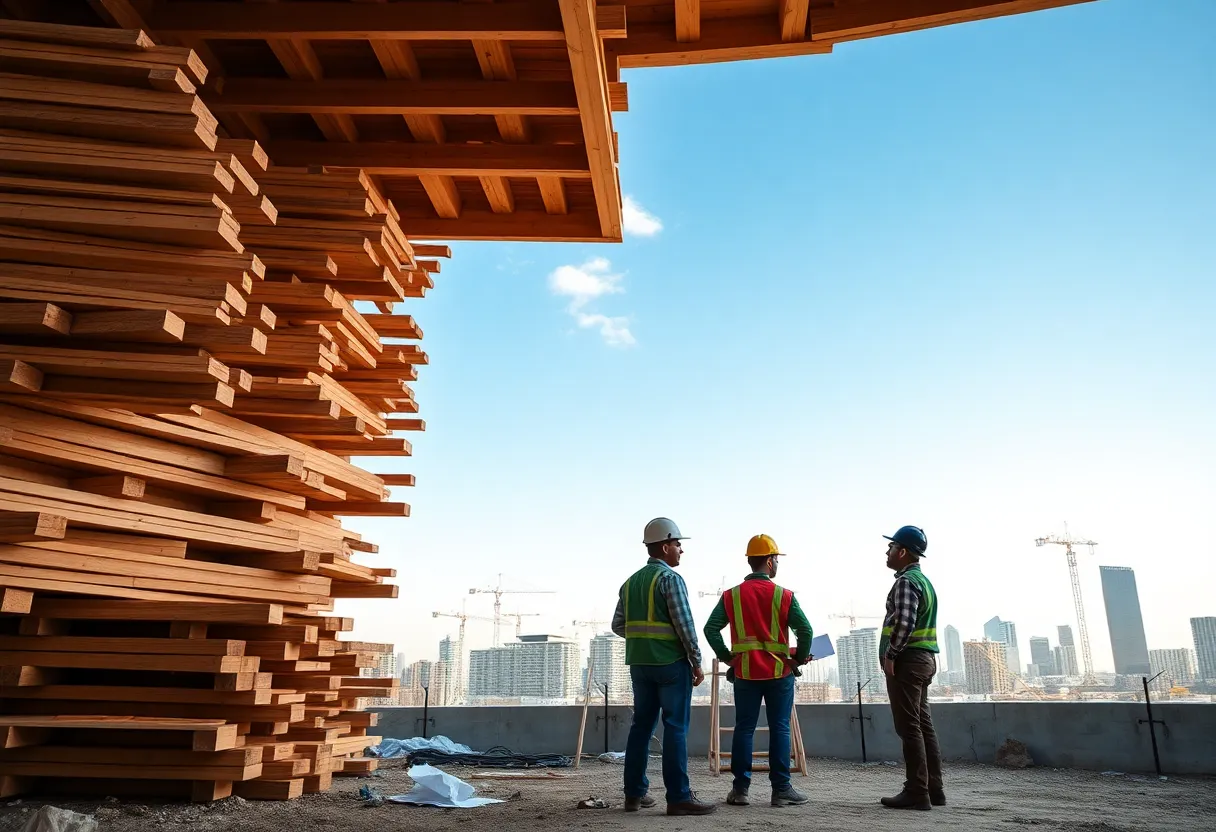News Summary
President Trump has signed executive orders imposing a 25% tariff on Canadian lumber, significantly impacting the U.S. housing market. As Canada supplies nearly 30% of softwood lumber used in the U.S., the new tariffs may drive up construction costs and housing prices, just as labor shortages further complicate the situation. Experts are warning that this move could strain affordability for potential homebuyers and disrupt trade relations.
New Tariffs on Canadian Lumber: What You Need to Know
In a move that many are watching closely, President Trump has recently signed executive orders declaring that the U.S. will no longer rely on Canadian products, including critical materials like oil, autos, and notably, lumber. With a hefty 25% tariff now placed on almost all imported items from Canada, the impact on the U.S. housing market could be significant.
The Lumber Landscape
Currently, around 30% of the softwood lumber used annually in the United States comes from Canada. This means that the new tariffs not only affect trade relations but could ultimately escalate costs for home builders across the nation. The lumber market is reacting to the tariffs in real time, with reports highlighting that existing duties could compound the situation further. The ongoing countervailing and anti-dumping duties are already at 14.5% on Canadian softwood lumber.
It’s important to understand that these actions weren’t taken in a vacuum. While the tariffs aim to address issues like undocumented immigration and the flow of substances into the U.S., experts are cautioning about the potential fallout on housing affordability. Many feel that the construction sector could be in for some serious strain.
Impact on Housing Affordability
Softwood lumber is a crucial component for homebuilding, used extensively for framing, roofing, and siding. With rising tariffs, the costs of building homes are likely to climb, exacerbating existing challenges for many potential homebuyers who are already grappling with affordability issues. According to the National Association of Home Builders, there has been a noticeable spike in building material costs. In fact, around 7% of goods used in constructing single-family and multifamily homes in 2023 were imported, with lumber alone accounting for a staggering $8.5 billion.
With the implementation of these tariffs, experts predict that overall construction costs could rise by somewhere between $3 billion to $4 billion. This added expense could push housing prices higher, all while the construction industry faces looming labor shortages that limit its ability to keep up with demand.
Looking Back: Lessons from the Past
Interestingly, U.S. history offers a peek into what’s at stake. The previous Softwood Lumber Agreement in 2006 led to a decline in softwood exports, which, while giving a temporary boost to domestic producers, ultimately cost consumers more at the checkout. Even though the U.S. boasts around 300 billion trees, ramping up domestic lumber production isn’t a quick fix due to regulatory hurdles.
The fluctuating prices of lumber over recent years, especially during the pandemic, have left many homebuilders anxious. Should the new tariffs lead to additional hikes in construction material costs, the ripple effect could drastically affect housing prices. This is particularly relevant given that materials like lime and gypsum, essential for construction, are primarily imported from Mexico and could also see price increases.
The Bigger Picture
Although the anticipated impacts of these tariffs are set to strain the housing market, it’s interesting to note that experts believe they might hit Canadian and Mexican economies harder than those within the U.S. The automobile industry may also feel the squeeze, with projected average price increases of around $3,000. This creates a perfect storm of challenges for consumers already facing high prices.
As the construction sector attempts to navigate through these turbulent waters, many builders are holding onto hope. There are calls for regulatory easing aimed at addressing housing shortages and making homes more affordable. But for now, the landscape appears to be shifting, as fluctuating lumber prices compound the existing challenges in a housing market looking for solutions.
Deeper Dive: News & Info About This Topic
- CNN: Canada Tariffs and Lumber Housing
- PR Newswire: US Lumber Coalition Rebuts Canada
- Resource Wise: Threatened US Tariffs
- BBC: Impact of Tariffs on Lumber
- Google Search: Lumber Tariffs








